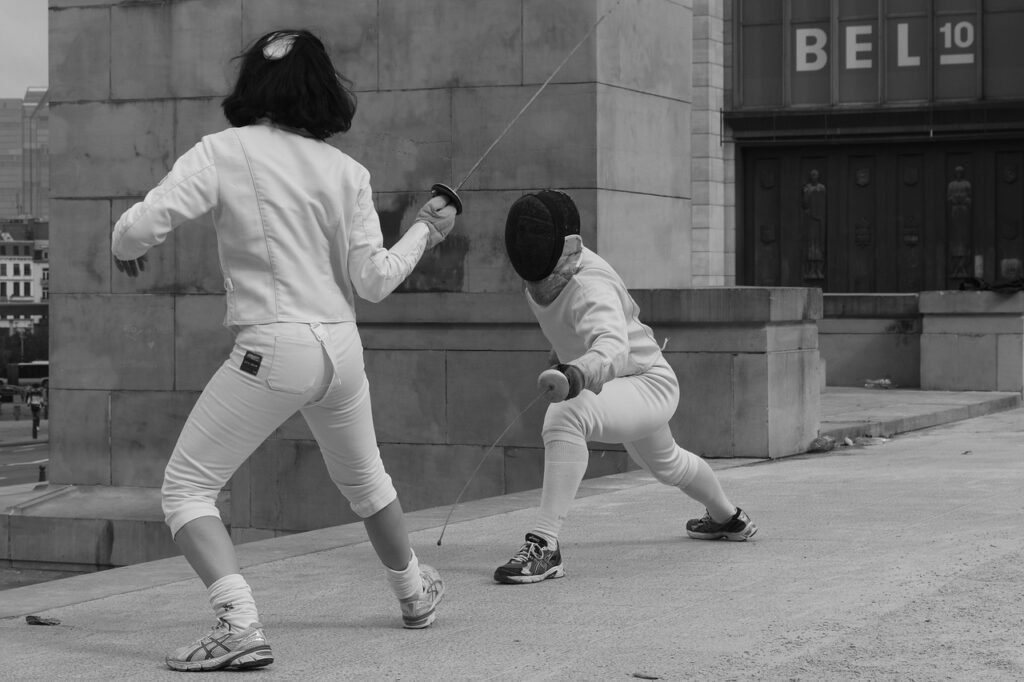Mastering the Oblique Kick Technique is your ultimate guide to perfecting one of the most versatile and powerful moves in martial arts. In this detailed article, you will learn the proper stance, the mechanics behind the kick, and tips for integrating it seamlessly into your training routine. Whether you’re a beginner or a seasoned practitioner, the insights provided will help you enhance your agility, power, and overall effectiveness. Get ready to take your skills to the next level and become more formidable in your martial arts journey. Have you ever found yourself fascinated by the world of martial arts, yearning to master the intricacies of powerful techniques? You’re not alone! Among the myriad of moves that martial artists employ, the oblique kick stands out for its precision, power, and versatility. Whether you’re a seasoned practitioner or a curious beginner, mastering the oblique kick technique can take your martial arts skills to new heights. So, let’s dive in and uncover the secrets behind this incredible move.

Understanding the Oblique Kick
Before we dive into the nitty-gritty of techniques and drills, it’s essential to understand what exactly the oblique kick is. The oblique kick, sometimes referred to as the “stop kick” or “push kick,” is a martial arts maneuver designed to attack the opponent’s legs, usually targeting the thigh or knee. The primary aim is to disrupt the opponent’s balance, making it difficult for them to execute their own attacks or defenses.
Origins and Historical Context
The oblique kick has roots in various martial arts disciplines, including Muay Thai, Wing Chun, and even Western martial arts like Savate. Each of these styles adds its own flavor and methodology, but the core principles remain the same—disruption, control, and power.
Why Master the Oblique Kick?
You might wonder why you should specifically focus on mastering the oblique kick. Here are some compelling reasons:
- Versatility: The oblique kick can be used both offensively and defensively.
- Disruption: It’s highly effective in halting an opponent’s forward momentum.
- Accessibility: Suitable for practitioners of all levels and body types.
- Safety: Unlike high kicks, the oblique kick targets lower areas, reducing the risk of losing balance.
The Mechanics of the Oblique Kick
To execute the oblique kick effectively, you need to understand its mechanics. Breaking down the technique into easy-to-digest segments will help you practice and perfect each part.
Stance and Positioning
A solid stance is the foundation of any effective kick. Your body should be well-balanced, with your weight evenly distributed between both feet.
Fighting Stance
| Element | Description |
|---|---|
| Feet Position | Your feet should be shoulder-width apart. The lead foot points forward, while the rear foot is angled outward. |
| Knees | Slightly bent for better mobility and balance. |
| Hips | Squarely aligned with your opponent. |
| Hands | Guard up to protect your face and upper body. |
Lifting the Knee
The next step involves lifting your knee to initiate the kick. Think of this as priming a spring, ready to release its stored energy.
Key Points:
- Chamber Position: Lift your knee to waist height. This action coils your muscles, preparing them for a powerful extension.
- Balance: Maintain your balance by keeping your upper body relatively upright.
- Aiming: Your eyes should be locked on the target area of your opponent.
Extending the Leg
This is where the magic happens! Extend your leg with controlled power, aiming for your opponent’s thigh or knee.
Important Aspects:
- Foot Position: The blade (outer edge) of your foot should lead the impact.
- Hip Rotation: Turn your hips slightly to add extra power to your kick.
- Follow-Through: Ensure that your leg extends fully, but don’t overcommit, which could compromise your balance.
Rechambering and Returning to Guard
Once you’ve delivered the kick, retract your leg swiftly back to the chamber position before returning to your fighting stance.
Executing the Return:
- Rechambering: Bring your knee back up to the initial chamber position.
- Foot Placement: Place your kicking foot back on the ground, returning to your balanced stance.
- Guard: Keep your hands up throughout to protect against counterattacks.
Drills to Perfect the Oblique Kick
Practice is key to mastering any technique. Here are some specific drills designed to improve your oblique kick prowess.
Shadow Kicking
Shadow kicking involves practicing your kicks without a partner or target, allowing you to focus on form and technique.
Step-by-Step:
- Stand in your fighting stance.
- Lift your knee to the chamber position.
- Extend your leg in a controlled manner.
- Rechamber and return to your fighting stance.
- Repeat in sets of 10 kicks for each leg.
Partner Drills
Having a partner can significantly enhance your practice by providing a live target and feedback.
Controlled Sparring:
- Setup: Partner A stands in a defensive stance while Partner B practices the oblique kick.
- Role Reversal: Switch roles after a set number of kicks or time interval (e.g., 1 minute).
- Feedback: Provide and receive constructive feedback to improve techniques.
Heavy Bag Work
Using a heavy bag can help you develop power and precision.
Heavy Bag Routine:
- Positioning: Align your stance correctly.
- Execution: Perform the oblique kick with full force, aiming to hit the same spot on the bag consistently.
- Reps and Sets: Start with sets of 10 kicks and gradually increase as you improve.
Speed and Reflex Drills
Speed and reflex drills can make your oblique kick faster and more instinctive.
Quick Fire Drill:
- Setup: Stand in your fighting stance.
- Cue: Have a partner give a verbal or visual cue.
- Execution: Deliver the oblique kick as quickly as possible upon receiving the cue.
- Reps: Perform in sets of 10, focusing on speed and reaction time.
Common Mistakes and How to Fix Them
Even experienced martial artists can make mistakes. Let’s look at some frequent errors and how to correct them.
Lack of Balance
Often, practitioners lose balance while executing the oblique kick. This compromise reduces the effectiveness of the kick and exposes you to counterattacks.
| Mistake | Correction |
|---|---|
| Leaning too far forward | Maintain an upright torso and engage core muscles. |
| Improper foot placement | Ensure your standing foot is firmly planted. |
| Overextension | Don’t force your kick beyond natural range. |
Telegraphing the Kick
If you make your movements too obvious, your opponent can easily counter or dodge your kick.
| Mistake | Correction |
|---|---|
| Excessive wind-up | Practice subtle and swift knee lifts. |
| Predictable timing | Vary the speed and timing of your kicks. |
| Overly dramatic hip rotation | Use minimal, controlled hip movements. |
Insufficient Power
Without proper power, the oblique kick loses its disruptive ability.
| Mistake | Correction |
|---|---|
| Weak core engagement | Strengthen your core with targeted exercises. |
| Poor hip rotation | Focus on incorporating your hips for added force. |
| Incorrect foot positioning | Ensure you hit with the blade of your foot. |

Importance of Conditioning
Conditioning your body is essential for executing effective oblique kicks. A well-conditioned body enhances both power and durability.
Strength Training
Building muscle strength is critical for powerful kicks.
Recommended Exercises:
- Leg Press: Focuses on the quadriceps, hamstrings, and glutes.
- Calf Raises: Important for ankle stability and kicking power.
- Squats: Great full-leg workout to improve strength and balance.
Flexibility
High flexibility allows for better range of motion and reduces the risk of injury.
Recommended Stretches:
- Hamstring Stretch: Eases tension and improves leg reach.
- Hip Flexor Stretch: Enhances mobility and power.
- Calf Stretch: Essential for a solid foot position.
Cardiovascular Conditioning
Good cardiovascular health ensures you have the stamina to maintain your form and power throughout training and in combat.
Recommended Activities:
- Running: Excellent for overall endurance.
- Jump Rope: Improves footwork and cardiovascular stamina.
- Cycling: Enhances leg strength and endurance.
Applying the Oblique Kick in Different Scenarios
Knowing how to execute the oblique kick is one thing; knowing when and where to apply it is another.
Against Aggressive Opponents
When facing an aggressive opponent, the oblique kick can serve as an excellent tool to keep them at bay.
Tactical Approach:
- Distance Control: Use the oblique kick to manage the distance between you and your opponent.
- Timing: Execute the kick as they move forward to maximize its disruptive effect.
In Defensive Situations
The oblique kick can also be a lifesaver in defensive scenarios, giving you the precious seconds needed to regroup.
Defensive Strategy:
- Counterstrike: When an opponent initiates an attack, use the oblique kick to halt their advance.
- Escape: Perform the kick to create a safe distance and evade further attacks.
In Competitive Settings
In sports like Muay Thai or MMA, the oblique kick can be a point-scoring move as well as a game-changer.
Competitive Use:
- Scoring: Aim for clean, visible targets like the thigh for point scoring.
- Strategy: Use it to weaken your opponent’s legs gradually, diminishing their mobility and power over time.

Safety Precautions
While the oblique kick is a versatile and powerful technique, it also comes with risks. Proper precautions can mitigate these.
Protecting Yourself
Ensuring your safety is paramount during both practice and application.
Tips:
- Warm-Up: Always warm up thoroughly to minimize injury risk.
- Proper Gear: Use shin guards and appropriate footwear during practice.
- Controlled Environment: Practice under the supervision of a qualified instructor.
Protecting Your Opponent
If you’re training with a partner, their safety should be a priority as well.
Tips:
- Controlled Force: While practicing, use controlled force to prevent injuries.
- Clear Communication: Always communicate with your partner to ensure mutual understanding and safety.
Enhancing Your Technique: Advanced Tips
Once you’ve mastered the basic oblique kick, you might want to take your skills to the next level. Here are some advanced tips to consider.
Combining with Other Techniques
The oblique kick can be seamlessly integrated with other moves for more complex combinations.
Combination Drills:
- Jab-Oblique Kick: Follow a quick jab with an oblique kick to unsettle your opponent.
- Oblique Kick-Leg Sweep: After executing the oblique kick, swiftly transition to a leg sweep to take down your opponent.
Feints and Fakes
Using feints can make your oblique kick harder to predict and counter.
Feint Examples:
- Body Feint: Pretend to go for a body kick or punch and switch quickly to the oblique kick.
- Footwork Feint: Make a quick step or shuffle to throw off your opponent’s timing before delivering the kick.
Concluding Thoughts
Mastering the oblique kick technique is a journey, one that involves understanding the mechanics, constant practice, and applying it in various scenarios. This kick can be a powerful addition to your martial arts arsenal, offering both offensive and defensive advantages. Remember, the key to mastery lies in continuous practice, attention to detail, and a genuine passion for learning. So, lace up those training shoes and start perfecting that oblique kick today!

